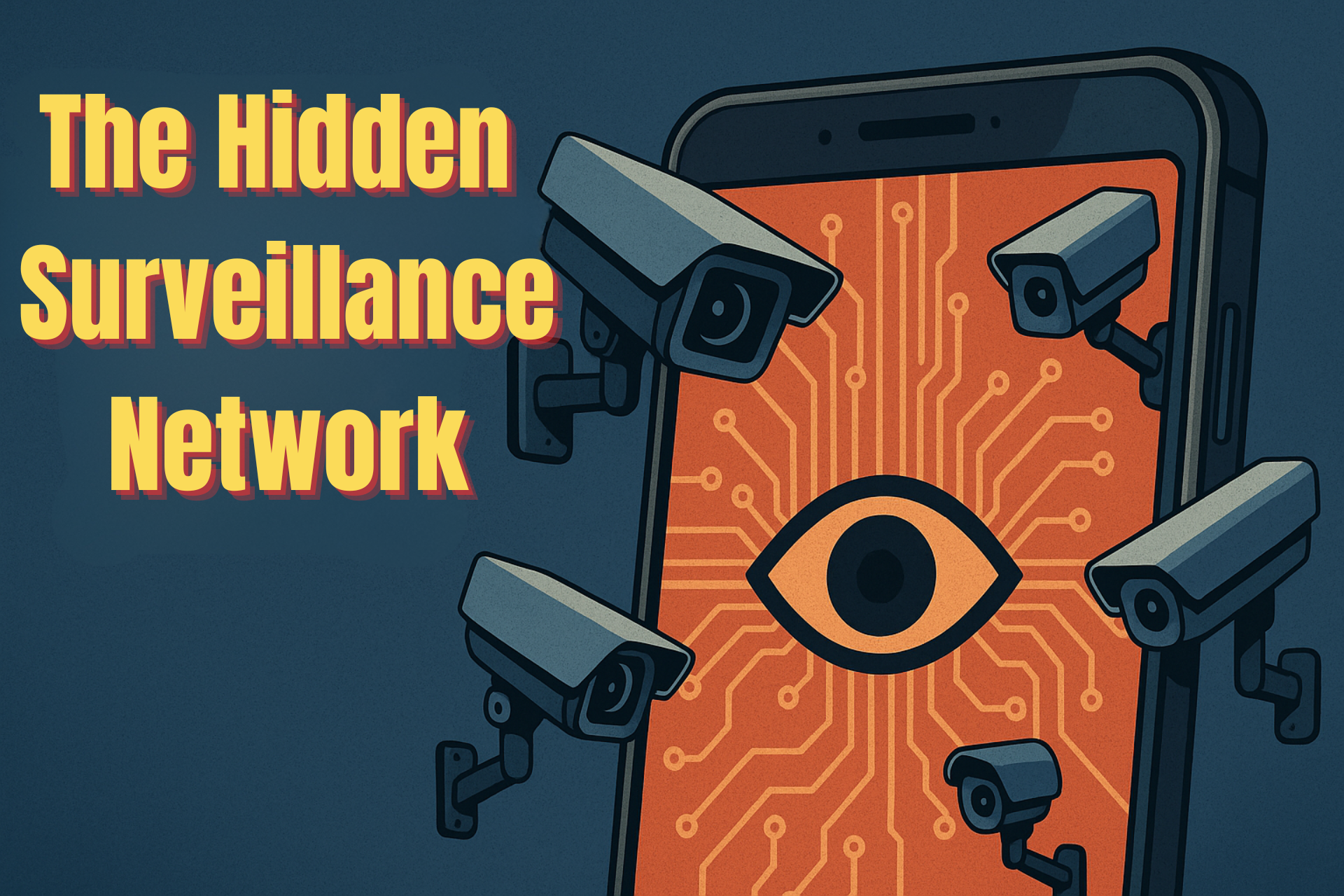The Hidden Surveillance Network Inside Your Smartphone
The most effective surveillance is the kind that feels like convenience.

In October 2025, an investigation by De Jure Media confirmed what privacy advocates had long suspected.
The Bluetooth signals constantly emitted by our smartphones and other devices are forming an unregulated, pervasive surveillance network. One that tracks our movements, habits, and associations with startling precision.
This isn't a conspiracy theory. It’s the inevitable outcome of a technological ecosystem built on data extraction, enabled by convenience, and shielded by public ignorance.¹
The Infrastructure We Never Opted Into
At the heart of this system lies the Google/Apple Exposure Notification (GAEN) framework. Developed during the COVID-19 pandemic under the banner of public health, it established a global Bluetooth-based infrastructure for device-to-device communication.
We were assured it was anonymous, voluntary, and temporary. Five years later, the skeleton of that system remains active.
Unlike GPS, which requires consent and explicit location permissions, Bluetooth Low Energy (BLE) is always-on, always-listening.
Phones, tablets, wearables, and even innocuous devices like smart lights and trackers continuously broadcast unique identifiers. When these identifiers rotate as designed, as with Apple’s Find.
Researchers from the University of Maryland demonstrated in a 2024 study that Apple’s Wi-Fi Positioning System created a “global surveillance capability,” able to silently map the location of billions of routers worldwide.
The same logic applies to Bluetooth.
When identifiers stick, or when metadata like signal strength and timing are logged, it becomes trivial to build persistent movement profiles.
Just a few data points can re-identify individuals from “anonymous” datasets with over 95% accuracy.⁴
The Shadow Market Built on Your Movements
Who uses this data? The ecosystem is vast and layered.
Data brokers like Oxydata, Near, and Cuebiq package and sell real-time location data to advertisers, political campaigns, and hedge funds.⁵
Law enforcement agencies regularly purchase access to this data, circumventing the Fourth Amendment.⁶
And as documents from firms like Palantir Technologies reveal, government partnerships, such as their $400 million CDC contract for a “Common Operating Picture” of public health, increasingly rely on integrating this granular, civilian-sourced behavioral data.⁷
Skeptics dismiss these findings as paranoia, attributing strange Bluetooth signals to unregistered imported devices, smart home gadgets, or technical glitches.
They rightly point out that the Bluetooth standard includes privacy provisions.
But in practice, there is no transparency, no public audit, and no way to verify whether rotating identifiers are truly effective, or if backdoors persist.
When devices broadcast with unregistered manufacturer codes or unusually strong, persistent signals, it suggests either systemic failure or intentional obfuscation.⁸
This is not a malfunction. It is a business model.
The location data economy is worth tens of billions annually. Our movements have become a commodity, harvested in the background and traded among players who never asked for our explicit consent.
History shows us how this ends. The Church Committee in the 1970s exposed how intelligence agencies routinely spied on U.S. citizens under the guise of national security.¹⁰
Edward Snowden revealed that metadata collection had scaled into total population surveillance.¹¹
Each time, the pattern was the same: new technology, justified by crisis or convenience, becomes normalized, then weaponized against the very public it was meant to serve.
There is no need for panic, but there is a urgent need for scrutiny and action.
Citizens can take simple steps: disable Bluetooth when not in use, limit app permissions, and use privacy-focused operating modes. But individual action is not enough. We need legislative and technical accountability:
- Mandatory third-party audits of Bluetooth and Wi-Fi tracking systems.
- Automatic sunset clauses for emergency surveillance frameworks like GAEN.
- Strict transparency requirements for public-private data sharing.
We must move from a culture of trust to a culture of verification. The signals are all around us. It’s time we start listening to what they’re really saying.
FOOTNOTES & SOURCES
¹ Biddle, Joshua. "The Bluetooth Surveillance Network You Can't See." De Jure Media, 28 Oct. 2025.
² Google & Apple. "Exposure Notifications: Fighting COVID-19." Google News Initiative, 2020.
³ Institute of Electrical and Electronics Engineers (IEEE). "IEEE Standard for Bluetooth Core Specification." IEEE Standards Association.
⁴ Rye, Erik, and Dave Levin. "Locating You: Global Surveillance via the Wi-Fi Positioning System." Proceedings of the 33rd USENIX Security Symposium, 2024.
⁵ Valentine, Katherine. "Your Apps Know Where You Were Last Night." The Wall Street Journal, 18 Dec. 2019.
⁴ Electronic Frontier Foundation. "ICE Already Has Access to Billions of Dollars of Cellphone Location Data." EFF.org, 15 July 2020.
⁷ Palantir Technologies. "Palantir Awarded Contract by CDC to Support Public Health Surveillance." Palantir Newsroom, 15 March 2024.
⁸ Bluetooth Special Interest Group. "Company Identifiers." Bluetooth.com.
¹⁰ United States Senate. "Final Report of the Select Committee to Study Governmental Operations with Respect to Intelligence Activities." U.S. Government Publishing Office, 1976.
¹¹ Greenwald, Glenn. "NSA Collecting Phone Records of Millions of Verizon Customers Daily." The Guardian, 6 June 2013.
University of Maryland 2024 study



